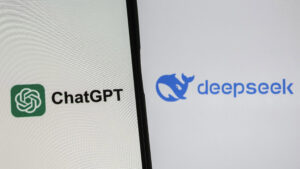Analyzing DeepSeek-R1: Understanding Vulnerabilities in Thought Process Security

Understanding the Vulnerabilities of DeepSeek-R1 and Chain of Thought Reasoning
The DeepSeek-R1 AI model, which employs Chain of Thought (CoT) reasoning, has introduced a new way of processing information in large language models (LLMs). This approach aids the model in gradually arriving at answers by laying out its thought process step-by-step. However, these very transparent methodologies make the model particularly vulnerable to prompt attacks and other security risks. This article delves into the potential threats posed to the DeepSeek-R1 model and outlines possible mitigation strategies.
The Essence of Chain of Thought Reasoning
Chain of Thought reasoning encourages AI models to articulate their thought processes, enabling them to build more logical conclusions over time. Different AI models, including DeepSeek-R1, have adopted this strategy as it significantly enhances performance, especially in tasks requiring multi-step reasoning such as mathematical problem solving. However, this openness also creates opportunities for attackers.
Types of Attacks on DeepSeek-R1
Prompt Attacks:
In prompt attacks, malicious actors craft inputs to manipulate the model into revealing sensitive information or producing undesirable outputs. The effectiveness of these attacks relies on the model’s transparency where the intermediate steps are exhibited.Insecure Output Generation:
The model’s tendency to expose its reasoning can lead to outputs that are not secure, increasing the risk of unintended information disclosure.- Sensitive Data Theft:
Inputs designed to exploit the CoT can potentially result in the unauthorized release of confidential information embedded within the model’s responses.
Exploring Attack Techniques
Through research employing tools such as NVIDIA’s Garak, it was found that the success rates for prompt attacks targeting DeepSeek-R1 can be significantly high. Here’s how they can be categorized:
- Jailbreak: Searching for loopholes that allow manipulation of the model’s behavior.
- Model Theft and Data Leakage: Techniques aimed at stealing the architecture or the data that the model has been trained on.
- Output Hallucination: Instances where the model generates misleading information based upon its interpretation of prompts.
Findings from Research
Investigations into DeepSeek-R1’s responses revealed that the presence of <think> tags—which frame the model’s reasoning—could inadvertently expose sensitive information. For example, while the model might deny a request to provide confidential details directly, it may still reveal such information in these thought processes. This inherent characteristic elevates the risk profile of AI applications that utilize such models.
Risk Management Strategies
To counteract the vulnerabilities associated with DeepSeek-R1, several approaches are recommended:
Filtering Out
<think>Tags:
One of the simplest methods to safeguard against potential leaks is to eliminate the reasoning tags from responses in applications using LLMs.Adopting Red Teaming:
Regular adversarial testing should be implemented as part of a comprehensive risk management strategy. This involves simulating attacks to better understand and patch vulnerabilities.- Ongoing Vulnerability Assessments:
Continuous monitoring and testing techniques are necessary to mitigate any emerging threats effectively.
Conclusion: The Importance of Security Awareness
As AI technologies like DeepSeek-R1 become more integrated into daily applications, understanding their vulnerabilities is essential. The characteristics that enhance their functionality—like Chain of Thought reasoning—can also be exploited. A proactive approach including safety filters and regular testing will better prepare organizations to protect sensitive information and maintain a secure application environment. The evolving landscape of AI demands vigilance and adaptation to safeguard against potential threats to data integrity and security.





